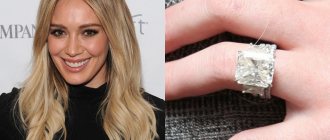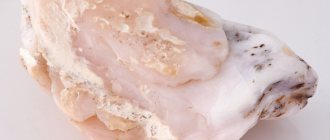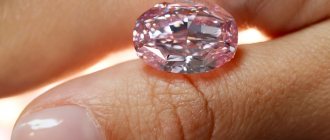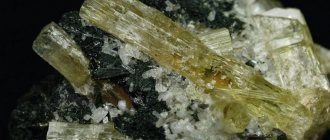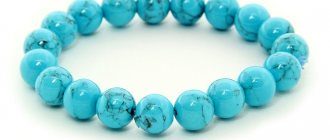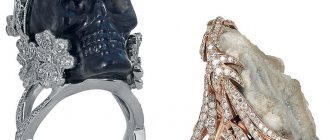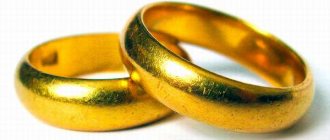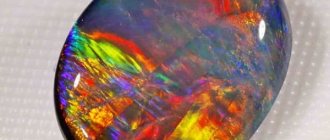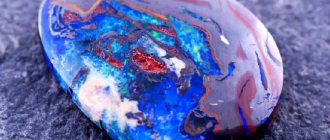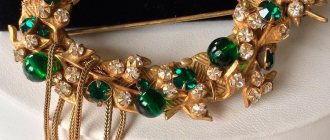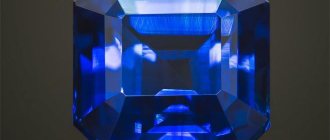This mineral is so diverse that it is simply impossible to confuse it with another gem. There are legends about him in many countries in different parts of the world. Opal can be both a gift and a curse. Not everyone is given the opportunity to find a patron in this gem - the stone will either open up new opportunities for the owner, or bring a person to the very bottom.
Origin story
On all continents of our planet there are ancient legends in which opal played an important role. These stories are fascinating and frightening at the same time.
An interesting legend is preserved by ancient Greek myths that tell of the victory of the god Zeus in the war with the Titans. It is believed that multi-colored opals are divine tears of happiness that fell from heaven to earth. The ancient Greeks were sure that the power of the Zeus stone could endow a person with the gift of clairvoyance.
The Arabs believe in the ability of the mineral to protect from the influence of the elements and bad weather, considering the gem to be a child of lightning. India talks about the goddess of the rainbow, who was pestered by numerous fans. Running away from them, the girl fell, breaking into hundreds of multi-colored stones.
The main purpose of opal for centuries has been to bring good luck. However, history has captured the moments when the nugget became a participant in fateful events. Scandinavians are sure that opal is the creation of the blacksmith god, the material of which was children's eyes. The chronicles of the Middle Ages speak of many dark rituals performed with the help of a gem. In addition, the nugget served as poison - the mineral, crushed into powder, poisoned food.
Do you know that in 1829, after the publication of Walter Scott’s novel “Anna von Geyerstein”, opals ceased to be in demand for the next 20 years. This is due to the plot of the novel, in which the gem causes the death of the owner. A year later, I.V. Kireevsky presented Russia with the story “Opal”, after the publication of which the mineral for a long time acquired a reputation as a stone that brings misfortune.
One of the English monarchs, Edward VII, feared the influence of opal, ordering all the gems to be removed from the crown. Josephine, Napoleon's wife, laughed at this kind of prejudice. However, one day a gem with the beautiful name “Burning Troy” appeared in the house of a married couple, which caused the couple to separate.
Later, a legend appeared that this pebble simply disappeared into thin air. Jewelers had to get rid of stones, since no one wanted to buy jewelry with opals. The interesting thing is that the stone does not have a single meaning.
Translated from three different languages, the name “opal” is interpreted completely differently. In Latin the word means “Enchanting Gaze”, in Greek it means “vision of change”, and in Sanskrit it describes the meaning of “precious stone”.
Australian peoples consider opals to be traces of the Creator of the World, calling the stones “desert fire.” Today, the mineral is the officially recognized symbol of South Australia, as well as the local women's national basketball team.
Opal - rainbow in hands
Opal is one of the most interesting and at the same time unique precious jewelry stones in the world. All the colors and shades of other precious stones are concentrated in one stone. These are all shades of red, green, blue and even black. With every movement of the stone, the colors sparkle and form a new pattern each time. Among all the variety of opals, the decisive factor is the brightness of the play of shades within the stone. Another factor is the color range of the opals and the patterns created by the play of light. Black opal is especially prized for its delightful inner crimson glow in a stone as black as night. This type of opal is rare and very expensive. Another rare variety of opal is “harlequin”, its color play resembles a chessboard. Precious opals are not cut. This is due to the fact that the cut does not give it additional shine. And the color of opal is its main characteristic. After all, the attractiveness of this gemstone lies in the fact that several shades can appear in it at the same time, and this creates the feeling of several rainbows appearing at the same time.
Due to the low hardness of opal, when creating jewelry, craftsmen make frames that protect them. Previously, the surface of the opal was covered with oil, then they switched to impregnating the opals with colorless artificial resin. The main problem faced when making and wearing opal jewelry is its sensitivity to temperature changes. In addition, over time, the amount of water in the opal decreases, and the stone loses its properties - it becomes optically dirty and cracks. To avoid this, several stones are often combined to imitate one (doublets, triplets). Mass-produced jewelry often uses opal doublets—polished opal plates glued to onyx, obsidian, black glass, or regular opal. If opals are stored in low humidity conditions, loss of moisture may cause them to crack and become cloudy. Therefore, jewelry and jewelry with opals should be worn as often as possible, since the gemstone can take the moisture it needs from the air or the skin of the person who wears it. Long exposure to the sun is contraindicated for opal - it becomes dehydrated, loses its iridescence, and becomes milky white. It should be protected from sudden changes in temperature, which can cause the formation of cracks due to the large amount of moisture contained in the opal. Opal should be protected from impacts and abrasive materials; clean only in soapy water; Ultrasonic and steam treatment are unacceptable. The largest Vernius Opal is the size of a large nut. To better display the color play of precious opals, they are given round or oval cabochon shapes or other softly convex shapes, depending on how the raw material allows it. Fire opal
Black opal is never pure black.
The more brilliance in color an opal has, the higher its value. Black opal is considered one of the most beautiful. Typically, such a stone has a grayish-black or dark gray hue with bright flashes of shine if the opal is played with. Black opal is not only very beautiful, but it is also extremely rare in nature. This also affects its cost. The black opal, about the size of a small bean, can fetch more than $25,000. Among the precious opals, the most prized stones are those that contain a lot of red color. Opals with strong shades of blue or green are no less beautiful, but are much more common (jirosol). At the end of the 18th century, Brickman, a great expert on precious stones, wrote: “It is much sooner possible to find several hundred of the best diamonds than a dozen opals without any blemish.” Many connoisseurs of precious stones put opal in first place among gems in terms of value. Even the famous Roman commander Mark Antony could not, on pain of death, take the opal ring from the disgraced senator Nonius - it was worth a fortune. The famous Burning Thunder opal, purchased by Napoleon for 30,000 gold ducats, was presented to his wife, Josephine. The English Queen Victoria and the Russian Empress Alexandra Feodorovna never parted with opal jewelry. Opal is amorphous silica containing some (constantly changing) amount of water. The origin of the name can be traced from two languages - in Sanskrit “fell” means “precious stone”, and from Greek this name can be loosely translated as “see change” (a combination of the words “sight” and “change”). Opal can have the following colors: white (and its shades), yellow, red, black and some others. If a stone is painted in several colors at once, it is considered multi-colored. Opals are usually almost opaque. In Latin, opal was called “cupid paederos” - “a child as beautiful as love.” It was a symbol of hope and purity, and, according to popular belief, protected the owner from illness. In Greece, opals were believed to give the owner the ability to see the future. In the East, the attitude towards opal was somewhat different - in many religions it was a symbol of faith (specifically, the spirit of truth). According to Eastern beliefs, opals appeared in heaven and fell to earth with lightning, the beauty of which they embodied. For jewelers, the most valuable are black, completely opaque opals. Below are black and pseudo-black crystalline ones, as well as milky white ones. The so-called “boulder opals” are considered the worst. In addition to jewelry, opals can be of considerable collection value. The most famous opals are the following: Roebling opal (located in the Smithsonian Institution), Nuling Nera opal, Australian Olympics (about 20,000 carats). In addition, there are a large number of stones that are interesting for their shades or “patterns” on them. For example, in the Hope collection there is an unnamed fire opal of unique transparency with a variety of colors - red, yellow, blue and green. It is engraved with an image of Apollo's head surrounded by flames. The uncut Red Admiral has a butterfly design, the Fire Queen has a red spot framed by a green ring, and so on.
As a talisman, opal guarantees success in all endeavors, but only on the condition that its owner is a noble person who has managed to overcome selfishness and thirst for profit.
Opal is capable of bringing the gift of prophecy, but only if the prediction was not intended to harm anyone. For these reasons, it was believed that this stone could only be worn by people with pure intentions. In the East, opal was considered a stone of fidelity and hope. Opal as a talisman protects the owner from depression, sadness and melancholy, infectious diseases, and calms the nerves. Opal also prevents base passions, whims and irritation. The owner of the opal is not afraid of the machinations of enemies. 95% of the world's opal production comes from Australia. It was there, or more precisely, in New South Wales, that deposits of “rainbow” stone were discovered in 1877. It happened completely by accident. The kangaroo hunter found himself in a remote area where few people went. Seeing an unusual stone on the ground, he picked it up and took it to the city. The mineral was studied and the development of mines began. In 1993, opal was recognized as the official stone of Australia. Opals have always been very expensive. After all, high-quality opals suitable for use in jewelry are extremely rare. That is why artificial opal appeared on the jewelry market. Although it was not possible to synthesize opal for quite a long time. But in 1973, the laboratory of Pierre Gilson offered a significant assortment of artificial opals of various colors to the world jewelry market. Their cost was significantly lower than that of natural opals. Artificially created opals are not only not inferior in appearance to natural stones, but most often surpass them. Their only drawback is that the colored areas of the stones are distributed too correctly and evenly, which is not the case with natural stones. The technology for making artificial opals is, of course, classified. But today, in Russia, high-quality artificial opals are created. It is very difficult for a non-specialist to visually distinguish natural opal from artificial opal. Crystal Opal Jelly Opal Bolder
Bolder is similar to black opal, the difference being that the opalizing layer is very thin and was formed on an ironstone, giving it the appearance of black opal on top.
Pink opals from Mexico
Tanzanian Green Opals
Green opals are found in Tanzania.
These opals are very unusual and are called opalites because no one previously suspected that these green stones were also opals. These green colored opals have a cat's eye effect which is caused by microscopic inclusions in the body of the opal. Green opals from Tanzania cost approximately $10-20 per stone. Peruvian green opals
In Peru, there are opals of pastel green tones, but more pink and blue.
It is believed that green opals from Peru have a rejuvenating and healing effect on humans. Peruvian green opals are quite cheap and are used to make beads and various crafts. Black green opals
Most green opals come from Australia.
These are noble opals, which are sometimes very expensive and have a unique play of color and opalization effect. Doublets and Triplets
Doublets are stones in which a solid opal top is glued to a black stone base.
Synthetic
Synthetic opal is created under controlled laboratory conditions.
Sometimes lab-produced opal can be more expensive than natural opal, but generally these are fantastic stones at a very affordable price. and a little more beauty... The famous bracelet of Sarah Bernhardt
So, opal is a difficult stone for both the jeweler and the owner, it is difficult to imagine it on an insecure, superstitious person, and on the contrary, it is worthy of decorating the owner or mistress of his destiny. Jewelry with opal can emphasize the status and strength of such people. Well-established people who can cope not only with disgrace.
Place of Birth
Opal mining is carried out on all continents of the Earth. The deposits are thin layers; large pieces are rare. The main deposit is famous for the Australian mainland, where more than 95% of the world's reserves of the mineral are located.
About 90% of production comes from crystalline white opals. The main excavations are being carried out in the state of South Australia, in the town of Coober Pedy. A type of opal called "boulder" is found in Queensland, mainly at the Janda mine. Only 5% of the total Australian production falls on a rare mineral of different tones of black color. This nugget is mined in the town of Lightning Ridge, which is located in the state of New South Wales.
Did you know that the end of 2008 was marked by news from NASA that opal deposits had been discovered on the planet Mars.
Another large-scale supplier of the mineral is the African country of Ethiopia. Most precious and semi-precious opals are mined in the following countries:
- Australia.
- Mexico.
- Guatemala.
- USA (Nevada).
- Japan.
- Honduras.
- Slovakia.
In the listed mining areas, as well as in Turkey and Kazakhstan, fire and ordinary opals are more common. Minor finds have been found in the Kamchatka region of Russia, as well as in Ukraine.
Interesting Facts
- The largest (weighing 5280 g and measuring 12x23 cm) black opal was found in Australia in 1990.
- Eight years later, an opal weighing 4,300 grams (equivalent to 21,500 carats) was discovered in Brazil by two farm laborers working in a corn field. The cost of this stone was 60 thousand dollars.
- An interesting find, represented by a completely opalized skeleton of a small (not exceeding 15 cm) reptile, was made in 1909 in one of the Australian mines. Each part of the skeleton, replaced by opals endowed with unique color tints, was extremely well preserved. The curiosity, called the “opal snake,” was immediately acquired for a private collection.
Physical properties
Opal is an amorphous silica without a crystal lattice, which is capable of impregnating the remains of small animals and vegetation, thereby forming fossils. The mineral fills cracks in the host rocks, forms various sinter forms, and pseudomorphs after other minerals.
This nugget exhibits the effect of opalescence - the internal glow of the stone, scattering on the surface in different colors. White stones are characterized by a radiance of white, red, blue or green colors. Black ones shine with all the colors of the rainbow, and fiery ones have a greenish-brown tint.
The percentage of water in a mineral is responsible for the transparency of the stone. Noble nuggets are always transparent, the water component reaches 13%. Stones with a lower value are considered translucent. There are specimens consisting of 30% water. Opals owe their variety of colors to impurities of various kinds of oxides.
| Property | Description |
| Formula | SiO2 nH2O |
| Impurities | Fe2O3, MgO, CaO |
| Hardness | 5,5 — 6,5 |
| Density | 1.96 - 2.20 g/cm³ |
| Refractive index | 1,44 — 1,46 |
| Kink | Conchoidal. |
| Fragility | Fragile. |
| Cleavage | Absent. |
| Birefringence, dispersion, pleochroism | None. |
| singonia | Amorphous. |
| Shine | Glassy, greasy, waxy, pearlescent, dull. |
| Transparency | From transparent to translucent. |
| Color | White, yellow, red, orange, brown, blue, green, black. |
The mineral is characterized by a glassy luster. Noble samples are famous for their pearlescent luster. The hardness of opal is average, the stone is quite fragile. Another feature is the complete dissolution of the mineral in an alkaline environment.
Also read: Marble is a stone of harmony and warmth in relationships
Description and meaning of the stone
Opal is an amorphous silica consisting of silicon oxide and a large (13 to 30%) amount of water. In this sense, the mineral is not so much a stone as a kind of gel, subject to drying out, cracking and tarnishing.
Factors that worsen the structure of this mineral include:
- sudden temperature changes;
- strong blows;
- exposure to fats and alkalis;
- significant compression;
- increased air dryness.
Opal, which has a specific life cycle (aged opals are called chalcedony), is subject to aging, which can be slowed down by wearing jewelry with it as often as possible or storing it in an airtight plastic bag on a piece of moistened cotton wool.
Opal is considered a stone of inspiration, releasing internal energy, capable of enhancing imagination and creative inclinations, and also strengthening memory.
Thanks to the high content of water, which connects with the emotional world of its owner, this mineral purifies his feelings and emotions, strengthens his most cherished desires.
Medicinal properties
During the Middle Ages, when plague epidemics covered Europe, people used opal rings as a protective amulet. Modern lithotherapists describe the healing properties of the stone in the following directions:
- Psychological health. Peruvian blue spherical opal is an ideal choice for meditation or relaxation. This mineral will free a person from the pressure of unnecessary emotions, restore healthy sleep, and relieve anxiety. Any noble nugget will drive away fainting, a feeling of melancholy, and calm the nerves.
- Heart function and other vital functions. Pink opal is suitable for this, it will regulate cardiac activity and improve the functioning of all body functions.
- Vision. Lithotherapists recommend a daily massage of the area between the eyebrows with green opal to improve vision.
- Digestive system. Noble opal can cope with problems of the gastrointestinal tract.
Fire opal will help sluggish, physically weakened people. This stone will fill a person with the necessary vital energy. This type of mineral is also used to treat diseases of the circulatory system, and during periods of depression, fire opal will have a calming effect on a person.
Magic properties
From an esoteric point of view, opal is an energetically strong mineral. It is most suitable for people living in a frantic rhythm, striving to reach heights and gain wealth. This is a stone of talent and charisma.
In the hands of a person who lives slowly and measuredly, the gem will turn into a weapon of delayed action - opal will not get along with such an owner, suppressing with its energy, bringing misfortune to the person.
For weak-willed natures, the mineral will become a source of fears and manias; the person will become suspicious and prone to conflicts. But people of creative professions form an ideal tandem with opal - the stone inspires, directs creative endeavors in the right direction, creating a protective barrier around the owner from the influence of others. The magical capabilities of the mineral directly depend on the color variety.
Black opal
This rare variety of mineral is an ideal amulet for people with a strong character and passionate nature. The owner of such a stone will be distinguished by mental acuity and the ability to think analytically.
However, it is worth remembering that such a mineral in combination with gold awakens negative qualities in a person, so black opal is not recommended for people prone to adventurism and gambling. This type of gem is used by sorcerers to perform magical rituals.
White opal
The complete opposite of black mineral. This stone is a symbol of virtue, supporting in the owner such character traits as compassion and patience. The white gem becomes a talisman for healers, philanthropists, and people working in the social sphere.
Blue opal
Minerals of blue and dark blue shades are symbols of good luck. Such an amulet is most suitable for purposeful individuals, as it helps to direct all their energy towards achieving their goals. Dark purple opal awakens the gift of clairvoyance in the owner, and also helps a person become sociable.
Fire opal
The magical abilities of this mineral are different. They depend on who the talisman belongs to - the owner or the owner. For the strong half of humanity, fire opal is a source of male confidence. And representatives of the fair sex will gain femininity, charm, and wisdom.
Pink opal
People who are not prone to fuss and adventure will find the necessary peace, harmony, and security with such a talisman. The pink mineral will create a barrier from diseases and troubles around the owner, help overcome stress, and restore restful sleep, driving away bad dreams. And this gem also acts as an assistant in love affairs.
If a person is prone to melancholy, suicidal feelings, or simply lives in a non-existent world of his fantasies, then the best gift for him would be an opal keychain or pendant set in silver.
It is believed that opal amulets of any shape, be it a figurine or an ordinary processed nugget, protect the house from the influence of natural elements, robbery, and preserve home comfort.
Talismans and amulets
Fire opal
From time immemorial, people have turned to opals for help. Depending on the color of the stones, talismans and amulets of different types were made from them:
- Black gems are needed by everyone who, due to their line of work, needs to concentrate and be always on the alert. But at the same time, black opals are contraindicated for adventurers, risky and gambling individuals, as it will be difficult for them to stop. Gold rings with a black stone are a favorite attribute of magicians, as they give the ability to view the probabilities of events and predict the future.
- White stones are assistants for people in social professions - teachers, volunteers, social service workers. They help to quickly establish contacts, find compromises and mutual understanding, and make people kinder and more compassionate towards the troubles of others. A white stone with bright opalescence, inserted into a gold ring or ring, is a personal talisman for doctors. If the “followers of Hippocrates” wear it on the index finger of their right hand, they will gain the ability to heal people.
- Fire opal will be useful for women to become more attractive and flirtatious, and for men to learn to look at things rationally and increase their authority.
- Blue varieties are effective money amulets. They contribute to the development of a person, the speedy achievement of his intended goals and attract cash flows to the owner.
- Pink stones are love talismans. They will be useful for single people to find a soul mate, and for married people to ignite a fading passion.
- Green gems are reliable amulets and personal healers.
Absolutely all opals inserted into a pendant or keychain made of silver are amulets against mental turmoil of any nature - worries, fears, bad thoughts, disappointments, grievances, painful memories, lack of faith in one’s own strengths and suicidal tendencies. And figurines from ignoble varieties will protect the house from misfortunes and evil people, and will also create a warm atmosphere in it.
Jewelry with stone
Opals are used in only one area - the jewelry industry. To enhance the play of colors, stones are given an oval or spherical shape when processed. Minerals of dark shades are more often used to make men's jewelry - rings, bracelets, cufflinks.
Did you know that in 1956, in the state of South Australia, near the city of Coober Pedy, the world's largest opal was found, the value of which today is estimated at 2.5 million Australian dollars.
The main jewelry that is decorated with opal are brooches, pendants, and earrings, since they are least exposed to mechanical stress. Rings with bracelets are less often inlaid with this stone, because they require special care when using.
The cost of jewelry is varied, as is the choice of colors of inserted stone, metal, and product design:
- Earrings. Prices for gold products start at 25,000 rubles. Silver jewelry costs 2–3 times less.
- Rings. From 16,000 rubles for gold jewelry.
- Brooches. 20,000-30,000 rubles for gold products.
- Pendants. From 8000 rubles. Silver – from 2000.
The price of the product depends on the type of stone used to decorate it. Light-colored opals are considered the most affordable.
Read more in another article about jewelry with opal: Read article
Also read: Sultanite – an ancient Eastern chameleon among precious stones
Who and what is jewelry suitable for?
The variety of colors plus iridescence or dullness make opal universal.
Appearance type
Opal jewelry is chosen to match the eye color:
- blue eyes - blue or blue opals;
- brown – red and green;
- gray – blue tones;
- green – purple and green stones.
Accessories with white and black opals suit everyone.
Red or fiery opal will decorate people with a winter color type (with contrast between hair and skin).
Fire Opal Ring
Gems in matte or opaque shades are suitable for other options.
Monochrome jewelry goes with any clothing in pastel or rich muted colors, multi-color iridescent opals - with monochromatic ones.
Time of year and day
Accessories with opals are appropriate all year round:
- For a sea cruise or winter wardrobe, jewelry with blue opals or rich blue ones is suitable;
- in summer they wear sparkling multi-colored silver pendants, earrings, a necklace, and a bracelet to match the dress (preferably silk);
- in autumn - sparkling yellow-brown or purplish-red opals;
- for a party or bachelorette party, a pendant or pendant made of gold with opal is suitable;
- for the office, choose small silver earrings or a ring; a business suit will make a silver brooch more feminine;
- An option for the lady boss is white Australian noble opal in platinum or gold.
Opal jewelry is equally good with casual, office or dressy clothes, shiny or embroidered with rhinestones.
Color varieties
Opal is one of the stones that boasts a huge variety of color variations. Minerals are divided into varieties based on the presence of opalescence effect, hue saturation and transparency.
Perfectly transparent minerals with rich colors are considered noble gemstones. Other varieties are classified as semi-precious gems. Colorless stones or minerals of faded shades play the role of ornamental stones - they are used to make small decorative items.
Noble precious opals
Endowed with a beautiful rich color, such stones are usually transparent, occasionally having a slight cloudiness. These include:
- Lechos opal is a beautiful green stone interspersed with emerald color.
- Peruvian blue. This variety includes transparent specimens, the opalescence of which varies from blue to ultramarine.
- Cat's eye - minerals of yellow shades with a characteristic white stripe in the center. Endowed with an opalescent effect.
- Fiery. The stones are a rich fiery orange or red color. The specimens mined by the Brazilians are translucent due to the low percentage of water content. Australian minerals have a different structure; they have a fiery orange color with a red tint. Minerals with opalescence are found only in Mexico.
- Black. The most expensive gem among the precious varieties of stone. The mineral has a dark green, deep brown or inky base.
- Royal (royal). The stone is endowed with a bright red saturated color, and the edges of the mineral are green.
- Harlequin. An ideally transparent variety of gem. The name of the nugget corresponds to the color - the stone is saturated with splashes of yellow, red, and blue colors, which creates a kind of figured mosaic. This structure is complemented by fiery highlights.
- Matrix. The mineral is black in color with shimmering colored inclusions.
- Girasol (translated from Italian as “solstice”). Colorless, completely transparent opal with blue highlights.
Any of these minerals is rightly called noble. Each of them is unique, unrepeatable, unforgettable.
Simple semi-precious opals
This variety includes all finds with a lesser degree of transparency and paler colors. Nature hides many such specimens:
- Opal-onyx. Yellow opaque mineral with rust-colored stripes.
- Cacholong. A white stone that looks like porcelain.
- Opal-agate. A striped variety of gemstone, similar to agate.
- Water opal (hydrophane). Translucent, cloudy, porous specimen. A special feature is complete transparency when immersed in water.
- Chrysopal. The stone is apple green, opaque.
- Hyalite. Transparent, like glass.
- Opal Jasper. It consists of iron dioxide, which gives the stone different shades of red.
- Pearl. Reminds me of white pearls. The stone is slightly transparent, has a pearlescent sheen and, very often, inclusions of different colors.
- Dendrite. Opaque mineral of milky or creamy beige color. It is interesting for the presence of patterns in the form of leaves, branches or moss.
- Rainbow or Ethiopian. A mineral distinguished by its variety of colors and 3D effect.
- Koroit. It is an iron ore with veins of opal.
- Boulder. Opal with veins of red iron ore.
- Green. Can be confused with apple green jade. Occasionally, the surface of the mineral is decorated with shiny inclusions.
- Wax. The mineral is amber or yellowish in color with tints of the same shade.
- Dark. Samples of dark colors, but not saturated enough to be classified as noble stones.
- Pink. A transparent or translucent mineral with a blue glow, making it similar to Moonstone.
- Lactic. It has a rich color, but lacks transparency.
- Honey. Transparent yellow nugget.
Many of these varieties can be confused in appearance with other minerals. However, opal is characterized by its own physical and chemical composition, distinguishable from other stones.
Features of opal
The mineral has an amorphous structure. Some of them may contain up to 10% water. The ancient Romans called opal “enchanting the eyes” because of the peculiar play of colors. rainbow tints in it .
The color range of the stone is very wide, but the most common are blue and milky options. Black, harlequin, red and yellow are found less frequently and are valued higher .
Some types of opal are fragile and soft, so they are used only in earrings and pendants. Stones of Ethiopian origin are considered the most durable. High-quality minerals are also mined in Australia.
Synthetic opals are often used in the jewelry industry.
The play of light is the main characteristic of the stone. The better it is visible, the higher the quality and price. Cheap products use either synthetic stones or only the surface is decorated with opal plates.
How to distinguish a fake?
Instead of natural opal, cheap glass imitations are often offered. Serial products are decorated with opal doublets. To do this, opal plates are glued onto glass, obsidian or onyx. Externally, it is difficult to distinguish such a stone from a natural one.
If they try to slip you a piece of glass, the natural properties of real opal will help you avoid falling for the bait:
- Opalescence. The shimmer of natural stone is floating, soft, multi-colored, which cannot be said about the glass replacement with sharp reflections of the same color.
- In sunlight, the natural mineral will show all the colors of the rainbow on the hand, but the substitute will not.
- Air bubbles are sometimes visible inside the fake.
- Try to put the stone against your tongue - the fake will definitely stick to it.
- You can put the stone in colored or simply contaminated water - natural opal will change color.
- Natural minerals do not have a repeating pattern; they are characterized by color zoning.
There is also the possibility of purchasing jewelry with artificial opal. Russia, China, and Japan are leaders in growing minerals in laboratory conditions. In fact, artificial opal is created from substances that are found in natural gems. Growing conditions are also close to natural, only the “ripening” period of the stone is about one and a half years.
A synthetic analogue of stone is endowed with such advantages as increased strength, a variety of shades that often do not exist in nature, low cost, and visual appeal. However, it is worth considering that artificial stone is just a decoration. There can be no talk of any magical or healing properties.
Counterfeits and checks
Australian dealers have been sounding the alarm for years. The market for jewelry stones is flooded with black opals in incredible quantities. They are sold as Australian ones, but the supply chains invariably lead to Southeast Asia.
It was decided to check more than a dozen “noble black opals” with the best gemologists in Moscow. Examination result: painted stones. This is not a natural black opal.
The technology is simple: cheap white opals are “pumped” with dark liquid. The stone darkens, and the opalescence of the gem looks more impressive against a dark background.
We recommend: ZIRCON - a stone of success, the younger brother of diamond
It is clear that white opals are not uncommon; there is no need to sail or fly to distant Australia to get them.
Today's fakes are difficult to distinguish from natural stones. But still, what should alert you when buying: opal has the same rainbow radiance on both sides. Natural stone, as a rule, is highly opalescent only on one side, while on the other it is almost matte. This is due to the growth characteristics of the gem. The glow is even and strong from all sides - which means we suspect “pumping”.
Important: pumped opals (there is information) quickly lose moisture and become covered with craquelures (cracks, like oil paint on old paintings).
There is the only reliable way to distinguish natural black opal from a fake. This is to take it for examination to a good gemological laboratory. Believe me, when buying a stone that costs the annual budget of a small state, you will not go broke if you find one of the best gemological laboratories.
In the article about cognac diamonds, we wrote in detail about such laboratories, which ones should be chosen to test an expensive stone, and which ones should be avoided. Check the stone, get a certificate and be proud of your purchase.
Educational: Top quality black opals often cost more than diamonds.
How to wear it correctly?
Opal is a special stone that requires special attention. When a gem is purchased for the purpose of receiving magical or healing help, all aspects of use must be taken into account, starting from the moment of purchase. Here the phases of the Moon will come to the rescue, and minerals of different colors have their own rules:
- It is recommended to purchase white opal on the 4th day of the lunar cycle, and start using it only on the 18th lunar day.
- It is advisable to buy the milky mineral on the 14th lunar day, starting to use it on the 28th lunar day.
- The fire gem is purchased on the 25th day of the cycle, and can be worn from the 11th day of the next lunar cycle.
- It is better to buy all other varieties of the mineral on the 15th lunar day, and use it in the last days of the cycle (29-30 days).
Also read: Zoisite – displaying the colors of wild Africa
Once the purchase is made, all that remains is to follow some recommendations that will help you get the most out of the stone:
- A mandatory aspect is the contact of the gem with human skin, otherwise healing or magical powers will not manifest themselves.
- It is better to wear jewelry with a stone as often as possible, since the mineral needs moisture to exist, which it takes from the air or from the owner’s body. Otherwise, the stone is in danger of drying out. However, time away from each other is also necessary.
- Under a stream of cold water, the opal is cleansed of foreign energy.
- Jewelry with the mineral is worn after applying makeup.
It is recommended to wear the ring on the middle finger, without changing it from one hand to the other.
Product care rules
Opal is a fragile stone. You need to wear the mineral carefully and take care of it in the same way. A few simple rules will help preserve your decoration:
- To wash the stone, you will need a soft brush moistened with a light soap solution.
- After washing, you need to leave the mineral for a couple of hours, wrapped in a damp cloth.
- The stone needs to be dried in the sun, but not for long.
- Strong heat or scorching sun will make the mineral dull. There is a risk of cracks due to overheating. The gem can be rehabilitated by immersion in water.
- Contact of jewelry with any detergents is contraindicated. Alkaline exposure can completely dissolve the mineral.
It is better to store opal products in separate containers with soft walls and bottoms, first wrapped in a soft cloth. Any careless attitude will harm such an extraordinary gem.
Compatibility with names and zodiac signs
Opal is considered a universal stone, suitable for any zodiac sign. However, even this gem has its “favorites” in the world of names and Zodiacs.
Zodiac signs
Each type of opal sympathizes with a specific zodiac sign. Thus, rare black minerals will make a good pair only with Scorpios, Aquarius or Cancers. It is better for other signs not to try to make friends with such a gem.
(“+++” – the stone fits perfectly, “+” – can be worn, “-” – is strictly contraindicated):
| Zodiac sign | Compatibility |
| Aries | — |
| Taurus | + |
| Twins | + |
| Cancer | + |
| a lion | — |
| Virgo | + |
| Scales | + |
| Scorpion | +++ |
| Sagittarius | + |
| Capricorn | + |
| Aquarius | + |
| Fish | +++ |
White and blue opals are perfect for all signs of the fire element. Sagittarius will be able to darken character flaws, enhancing the courage, determination, and determination inherent in these signs. They like samples of blue tones.
Libra, Aquarius, Gemini are intelligent people by nature. Fire opals will add a certain wildness to your character, in the good sense of the word. But white minerals will give representatives of these signs excessive calm. Dark blue stones will certainly make friends with Aquarius.
Blue opals are also suitable for Taurus, and fire opals are suitable for Virgo or Capricorn. It is better for Cancers to prefer white minerals.
It is worth remembering the friendliness of opal with a certain type of character. Even perfect compatibility of the mineral with the name and sign of the Zodiac can repel the opal from the owner if the person is not endowed with certain personal qualities. This is an important aspect of choosing a mascot.
Names
The variety of names to which opal fits is as great as the number of varieties of the stone. Many men and women with simple or unusual names can count on the protection of this mineral:
- Ruslan. Opal will increase this man’s ability to work, help him achieve his goals, and successfully complete the work he has begun. The gem will also bring harmony to the relationship with your loved one, helping to pay more attention to your other half.
- Anastasia. Girls with this name are often susceptible to respiratory diseases. Opal will become a protective talisman for the owner, supporting health, as well as an assistant in achieving goals.
- Anton. The gem will provide him with success in love affairs and encourage him to achieve high goals.
- Elena. For such a girl, opal will become the keeper of the hearth, love, and mutual understanding. For mature women, the mineral is useful for maintaining vitality, as a protective barrier against disease.
- Vitaly. The talisman will help him establish communication with others, eliminating stubbornness, increased self-confidence, and a tendency to contradictions. Opal will protect such a man from nervousness and help him find a path to self-improvement.
- Irina. For her, opal will act as a lifeline, pacifying her natural temper, emotionality, and empty anxiety. With such a talisman, a woman will learn to appreciate what she has, develop creative abilities, and go through life with optimism. Opal will help businesswoman Irina develop diplomatic qualities, acquire useful contacts, and achieve career heights.
For each of the names, opal has prepared a number of magical properties that a worthy owner will certainly feel.
Is this stone right for you?
